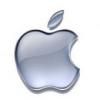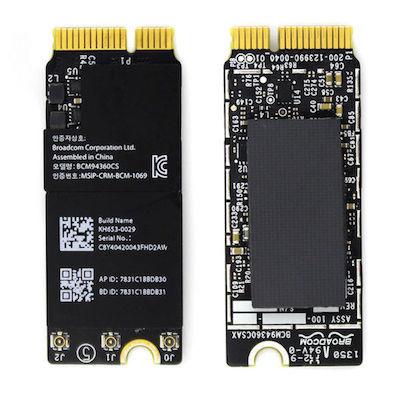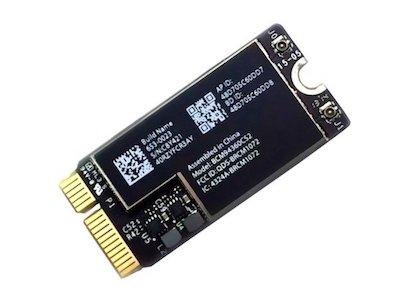-
Posts
10067 -
Joined
-
Last visited
-
Days Won
569
Content Type
Profiles
Articles, News and Tips
Forums
Everything posted by Hervé
-
If the E7240 can physically take the card, go for this and Bob's your uncle.
-
Oh look! https://osxlatitude.com/index.php?/topic/9484-e5420-el-sierra-only-partially-working/&do=findComment&comment=69330
-
You could have started with that rather than state "LAN does not work"... Run DPCIManager app to verify the card model or if it's even detected in IOReg. Wasn't there also a ROM parameter of some sort to enable or disable in BIOS? Did you check the other E5x20 threads or search the forum?
-
Please lookup the HD4000 patching guide in the R&D->Graphics forum sub-section. However, please note that there's a chance that HDMI output is wired through the nVidia discrete GPU and since neither Optimus nor the GT630m are supported under OS X/macOS, that'd leave you without HDMI output capabilities.
-

Dell mobile Precision 7510 Intel hd530, black screen
Hervé replied to ss2sameer's topic in The Archive
You should contact Mieze and tell her about your LAN performance tests. -
How about a little homework on the forum, hmm? Be "smart"...
-
Well, there you go then, no need to state the obvious... On checking Dell's web site for Vostro 5460 touchpad driver, it appears the laptop is fitted with an ELAN touchpad:
-
Even though post #1 states the drivers support ALPS hardware V1 to V5, I don't think Dr Hurt's R4 and R5 versions support these older ALPS touchpads very well. I could not use these kexts on my old Latitude D630 that also has a V2. I suggest you try the PS2 kexts I posted in my D620/D630 bootpack thread instead.
-
Check the syslog for ALPS touchpad. From Terminal, type log show | grep ALPS. If you have an ALPS touchpad, it'll say so and its version will be displayed. If you still have Windows, you can also check the details of the driver in Device Manager.
-
Try and identify your ALPS touchpad version in the boot log. You might have a model not entirely supported by the driver. You can use the following Terminal line command for instance: e6230:~ admin$ log show | grep ALPS 2017-07-12 20:57:14.208257+0200 0x3daa3 Default 0x0 0 kernel: (kernel) ALPS: Found a V3 Rushmore touchpad with ID: E7=0x73 0x03 0x0a, EC=0x88 0x08 0x1d
-

Converting a volume of an MBR SSD to GUID via terminal using usb mac installer
Hervé replied to Laxman's topic in The Archive
Answer is no. A volume is a disk partition and cannot be further partitioned... One can only adjust partition sizes of a disk and add/remove partitions. https://en.wikipedia.org/wiki/Disk_partitioning https://coriolis-systems.com/static/support/help/iPartition/pgs/schemes.html https://www.howtogeek.com/193669/whats-the-difference-between-gpt-and-mbr-when-partitioning-a-drive/ MBR and GPT/GUID are disk partitioning schemes. On a given disk, only partitions formats can differ and co-exist, not partition schemes which are unique. It's not very common to convert disk partitioning from one scheme to the other but there are tools to do so. Usually, one simply entirely wipes out a disk and starts afresh with the desired/target partition scheme. https://www.windowscentral.com/how-convert-mbr-disk-gpt-move-bios-uefi-windows-10 If you're trying to install OS X/macOS on an MBR disk, you need to apply the MBR patch. Whatever you attempt or decide to do with your SSD, there's only 1 thing to do if you cannot lose your data... NB: no multiple posting on the forum for the same matter please! -

E6540: How do I get my Radeon HD 8790M working under macOS?
Hervé replied to gen2's topic in The Archive
It's not supported, so you can only run OS X/macOS on the HD4600. Ideally, disable the AMD via DSDT or SSDT patching to save power. -

Vanilla and patched Sierra kernels + patched AICPUPM kexts
Hervé replied to Hervé's topic in OS X/macOS
Updated with 10.12.6 files.- 1 reply
-
- 1
-

-
There's a guide, if you cared to search a little... https://osxlatitude.com/index.php?/topic/8506-dell-latitude-inspiron-precision-clover-guide/
-

dell e6430s performance problems - 2 Machines - only one fast
Hervé replied to cellstorm's topic in The Archive
You can of course retrieve the kext from any existing pack or scrounge the Net for it. Can't comment on your copy/paste issue but this would have to be a user error. No, add-on kexts placed on /S/L/E will not be removed/deleted at the next update. But add-on kexts are lost with the rest in that folder. That's why it's been recommended for years to keep them separate and in folders such as /E/E or, more recently, /L/E. Regarding sleep, it's probably incorrect settings. Did you disable hibernation for instance? If you want to patch AppleRTC, you can simply activate the Clover option. It may be worth you spend some time running the Clover Configurator app and reading Clover's wiki so that you learn about Clover and its numerous options. -

dell e6430s performance problems - 2 Machines - only one fast
Hervé replied to cellstorm's topic in The Archive
Install EAPDFix kext to get audio through the headphones. You may still experience glitches on occasion when you plug/replug the earphones, in which case pout the laptop to sleep and wake it. That'll bring everything back to normal. Can't comment on the stated sleep issue with 16GB of RAM but I guess you know what to do to verify what you were told. I'd be surprised if it made a difference though... -
This (cheap) Chinese tablet-PC seems limited to the Indian market so feedback on Hackintoshing will not be widespread. Manufacture not for the faint-hearted! https://fccid.io/pdf.php?id=2718894 https://osxlatitude.com/index.php?/topic/9581-haier-y11b-el-capitan-installation/
-

High Sierra beta on Dell Inspiron 5759 (Skylake with Intel HD 520)
Hervé replied to haydara's topic in The Archive
You can only drop SSDT with Chameleon/Enoch but I must admit I've never seen that MATS table being dropped in Clover before. I've only seen DMAR + SSDT CpuPm + SSDT CPU0Ist. -

High Sierra beta on Dell Inspiron 5759 (Skylake with Intel HD 520)
Hervé replied to haydara's topic in The Archive
Really sorry but I've not had my hands on any Skylake platform yet, so no experience whatsoever. -
VGA output unsupported on those laptops...
-
Further to a discussion held on another forum, it's worth confirming that there are fake Apple BCM94360CD cards offered by sellers from the Far East... A real & genuine Apple BCM94360CD card carries the following subsystem ids: wifi = 106b:0111 BT = 05ac:828d Only genuine cards are guaranteed to work OOB and to the full. Other genuine Apple BCM94360 cards include: BCM94360CS (2013 MBP like MacBookPro11,x) -> Wifi = 106b:0134 | BT = 05ac:8289. This is a 3 x antennas model. BCM943602CS (2015 MBP like MacBookPro12,1) -> Wifi = 106b:0133 | BT = 05ac:8290. This a 3 x antenna model. BCM94360CS2 (2013 MBA like MacBookAir6,2) -> Wifi = 106b:0117 | BT = 05ac:828f. This is a 2 x antenna model and the smallest card of the lot. Also worth noting that these cards do not have the same antenna connectors: BCM94360CD, like BCM94331CD, is fitted with larger U.FL/IPEX (IPX1) 2mm connectors, the same that are commonly fitted to most mini-PCIe wireless cards BCM94360CS/2CS/CS2 are fitted with smaller MHF4 (IPX4) 1.5mm connectors, the same that are commonly fitted to most M.2 wireless cards
-

High Sierra beta on Dell Inspiron 5759 (Skylake with Intel HD 520)
Hervé replied to haydara's topic in The Archive
I've no idea of what error you get... -

High Sierra beta on Dell Inspiron 5759 (Skylake with Intel HD 520)
Hervé replied to haydara's topic in The Archive
https://osxlatitude.com/index.php?/topic/9916-high-sierra-on-dell-skylake-hd520/&do=findComment&comment=70960 -
Why not? Overall, same process as per Sierra but make sure to use a High-Sierra compatible Clover version.
-

High Sierra beta on Dell Inspiron 5759 (Skylake with Intel HD 520)
Hervé replied to haydara's topic in The Archive
I already did and was a little scared...







